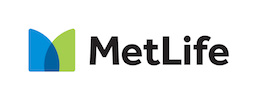Leveraging Behavioral Economics to Drive Positive Change
Sep 17, 2018 9:45 AM ET
To encourage healthier financial behavior among their customers, financial institutions must first understand why people make certain decisions. By applying behavioral economics insights to their product offerings and service approach, our partner organizations are more effectively helping clients spend less and save more.
- Latin America: ideas42 ideas42 is a nonprofit behavioral science firm that leverages what we know about human behavior to design innovative solutions to difficult problems. In Latin America, ideas42 worked with MetLife Foundation to explore the underlying factors contributing to a widespread lack of retirement savings among working adults. They then designed and tested interventions to promote larger and more frequent retirement contributions. In Mexico, ideas42 redesigned client account statements for retirement fund administrators — which collectively reach 21 million Mexican citizens — to incentivize clients to take the steps needed to prepare for retirement.
- United States: Common Cents Lab, Duke University Housed at the Center for Advanced Hindsight at Duke University and exclusively funded by MetLife Foundation, Common Cents Lab tests interventions to help households increase their financial well-being. The lab — composed of behavioral economists, social scientists and technologists—undertakes experiments to understand and improve financial decision-making among low-income Americans. The Lab has partnered with fintech companies, credit unions, banks and nonprofits, resulting in more than 500,000 low-income Americans reached with better financial services.
- Vietnam: BFA Global and the Capital Aid Fund for Employment of the Poor (CEP) — OPTIX Program OPTIX aims to improve how financial institutions can be a one-stop-shop for financial services for low-income people. Working in four countries in Latin America and Asia, OPTIX aims to increase convenience and affordability for customers taking advantage of multiple financial products that are relevant to their needs, such as savings and borrowing services in one institution. In Vietnam, BFA works with the CEP, a nonprofit lending institution, to apply marketing science insights to improve its product offerings and promotion strategy to enable low-income borrowers to take advantage of a wider range of savings products.
To view either the Overview or the full report, and to learn more about MetLife’s corporate responsibility activities, please visit www.MetLifeGlobalImpact.com.

